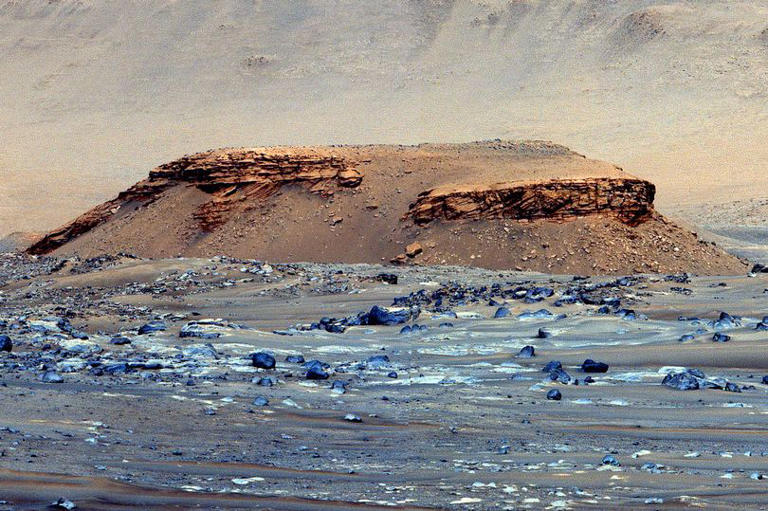Exploring the Origins of Life on Mars
Delve into the intriguing possibilities of life on Mars as we explore the Martian origins of life. Learn about recent research suggesting that Mars might have been hospitable to life in its ancient past.

Martian Origins of Life
Mars, the enigmatic Red Planet, has long captured the imagination of scientists and space enthusiasts alike. While its barren surface may seem inhospitable today, recent discoveries hint at the tantalizing possibility that Mars might have harbored life in the distant past.
Unraveling the Mysteries of Ancient Mars
In a quest to unravel the mysteries of Martian history, scientists have turned their attention to the planet’s ancient past. Evidence suggests that Mars once boasted vast oceans and flowing rivers, making it a potentially habitable environment billions of years ago.
Signs of Water: A Crucial Clue
One of the most compelling pieces of evidence for ancient Martian habitability is the presence of liquid water. Scientists believe that Mars was home to rivers, lakes, and even oceans for at least 200 million years. Water is a fundamental building block of life, and its presence significantly increases the likelihood that Mars could have supported living organisms.
The Role of Atmospheric Formaldehyde
Recent research conducted by a team at Tohoku University has shed new light on the potential origins of life on Mars. The study focuses on the role of atmospheric formaldehyde in the formation of organic molecules, the building blocks of life.
Formaldehyde, a simple organic compound, could have played a crucial role in the emergence of life on Mars. The researchers used sophisticated computer models to simulate Martian conditions and concluded that formaldehyde may have been present in the planet’s atmosphere billions of years ago. This suggests that Mars had the necessary ingredients for life to emerge.
Simulating Ancient Martian Conditions
Using their computer model, the researchers recreated the atmospheric composition of ancient Mars. They found that carbon dioxide, hydrogen, and carbon monoxide were abundant, providing the ideal conditions for the formation of formaldehyde. This continuous supply of atmospheric formaldehyde could have facilitated the synthesis of organic compounds essential for life, including amino acids and sugars.
Implications for Martian Habitability
The implications of these findings are profound. They suggest that Mars may have been far more hospitable to life in its early history than previously thought. The presence of atmospheric formaldehyde opens up new possibilities for the emergence of life on the Red Planet.
A Window into Mars’s Past
By studying the chemistry of Mars’s atmosphere and surface, scientists can gain valuable insights into the planet’s past. The discovery of potential biomolecules on Mars provides a tantalizing glimpse into its ancient history and raises intriguing questions about the possibility of past or even present life on the Red Planet.
Exploring the Noachian and Early Hesperian Periods
The study also considers the Noachian and early Hesperian periods as plausible times for the presence of bio-important sugars on Mars. These epochs, characterized by volcanic activity and the presence of liquid water, may have provided the ideal conditions for the emergence of life.
Looking Ahead: Future Exploration
As we continue to unravel the mysteries of Mars, future exploration missions will play a crucial role in advancing our understanding of the planet’s potential for life. Robotic rovers, such as NASA’s Perseverance, are equipped with state-of-the-art instruments designed to search for signs of ancient microbial life and assess the planet’s habitability.
Conclusion: A Promising Frontier
The quest to uncover the origins of life on Mars is a journey filled with excitement and discovery. While many questions remain unanswered, the recent research offers new hope and insight into the possibility of life beyond Earth. As we continue to explore the Red Planet, we may one day unlock the secrets of Martian origins and uncover the truth about our place in the universe.
In conclusion, the Martian origins of life present a compelling narrative that challenges our understanding of the cosmos and ignites our imagination. As we peer into the depths of space, we are reminded of the boundless potential for discovery that lies beyond our planet’s shores.